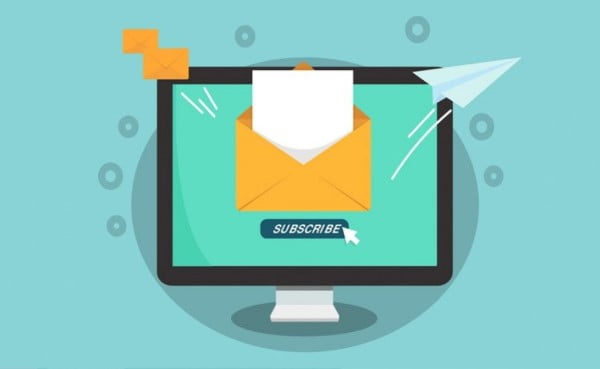
20 Mar 3 tips for email marketing campaigns
The marketing landscape changes almost daily, so there will naturally come a point where you will ask: is email marketing worth it anymore?
The way people engage with brands has seen massive changes over the past few years. Is email still on that list? Here’s your answer: email marketing is not just a consistently effective strategy for online brands, it is THE most effective strategy.
More so than TV, radio, ads, or any other method, email marketing sits at the top with an average return on investment of $38 for every $1 spent, and that number continues to grow each year. In fact, one in five companies see email marketing provide an ROI of 70:1.
Now that we know it works, the issue becomes how one goes about using email marketing properly. In this article, I’ll cover three essential steps to a successful email marketing campaign: how to grow your list, how to increase your open rate, and how to avoid the spam folder.
STEP 1: GROW YOUR LIST
We’ll start with the first issue anyone beginning to run email marketing will face, building a list. Let me begin this by telling you something I’m sure you’ve heard before, but bears repeating: don’t buy emails. This almost never brings engagement to the website, and can hurt your marketing campaign down the line with emails that you captured organically by destroying trust customers have with
your campaign.
There are a few good ways to capture emails organically. Firstly, if you are launching a website, build a landing page. A simple, one-pager that talks about your upcoming website and encourages people to subscribe to your mailing list. If you can, offer some kind of benefit for people who sign up early: a giveaway, a pre-launch discount, etc. This is a proven method for growing engagement.
But what if you already have a website? The same rules apply: running contests or giveaways to bring visibility to your brand, and encourage users to engage with your website. Think about it, how many times have you visited a website for the first time and been greeted with a pop-up that says something about a discount? “Sign up today for 15% of your first order!” or something along those lines. It happens a lot because it works.
STEP 2: SEGMENT YOUR EMAIL
I’ve spoken about this in past articles, and I’m sure it will come up again in the future, but that’s because it is a sure-fire success generator: personalization. Users are exponentially more likely to engage with something if it is personalized to them, be it a CTA, link, or email.
Use the data you have about your email list to decide what to send them. This is called segmented email marketing, and it hinges on separating the people on your mailing list based on demographic: location, purchase history, general interest.
Why send an email about a shoe sale to someone who hasn’t shopped online for shoes in years? Send that email to people you know will open it, and send a different email to a different client. It seems simple, but budgetary restrictions and limited mailing lists can make this difficult.
Here’s a tip for those of you who are just starting to grow your mailing list: if your email list is small, start segmenting in big chunks. Instead of going by purchase history or interests, go by location or something simple. If you have 20 emails, 10 of them will most likely fall into one category, and 10 more will fall into a different category. Now you have two possible marketing opportunities which are almost guaranteed to work better than one general email.
STEP 3: AVOID THE SPAM FOLDER
Quality over quantity. It is that simple, and that difficult. The short term goal of email marketing is often to increase traffic or sales, when this is not the best way to use it. Your marketing campaign should be about building trust. Building trust with your brand, your site, or your products.
There is a general consensus that emails must go out weekly, or multiple times a week. If you find yourself struggling to come up with content for those emails, don’t force it. Sending out a fluff email can be just as bad as not sending one at all. If you are inundating your customers with emails, and none of them say anything important, they could start to assume your emails are forgettable. Plus, if you email too often, you get flagged as spam by your customer’s spam filter.
CONCLUSION
Following these three steps can help you take huge leaps forward in your email marketing. Moving from a focus on sales to a focus on nurturing trust will make your emails worth the money you are putting into them, and your customers will let you know that by engaging and converting.
We build personalized marketing plans, including email campaigns. If this is something you need, contact us.
